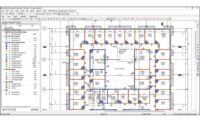How to Hire a Great Estimator

Hiring a new estimator is a great position to be in. Your business is growing. Pre-plan the hiring process before you post the job opening.
A common mistake construction executives make is recruiting team members simply because they look the part. In the long run, it doesn’t matter if, on paper, someone’s resume and “image” look perfect. You want people that can actually do the job. That junior estimator from the skyscraper builders? They look the part but they may be bored with your one-month duration projects and they may jump ship in six months. You have to start all over again. Get good at judging real-world talent where others don’t. Use a process to help you narrow your search for the best estimator.
Process: Have a process for all of your company tasks. Hiring is certainly a candidate for a process. This should be part of your company’s standard operating procedure(s). The SOP is your company’s master guide for everything from the bid process, to hiring guidelines, onboarding, new employee orientation, safety training, operations activities, accounting and expense reporting.
Checklist: Your process can be boiled down to a checklist. Not that it’s the “be all end all” but rather something that keeps you focused so you don’t skip over some key steps. Update the job description, create a list of questions, check academic and employment history, background check, and check references.
Candidate Questions: Write down a series of questions an estimator should know. Here are some examples:
- Walk me through your estimating process, how do you do takeoff?
- What are the most important factors that affect overall costs of a project?
- Which metrics do you use most in your estimates?
- What information does an invitation to bid give you?
- What software do you find most useful?
- How do you communicate with field staff to make sure your productivity rates are current?
- How do you ensure accuracy in your work?
Have the detailed list of duties, questions, and the job description on hand when you make this first call.
References
Check References: Don’t lag on this very important item. You might not hear anything negative about the candidate, but hearing from his or her most immediate past supervisor will provide the information you can’t get anywhere else. Remember, most previous employers can’t say too much, but develop a list of generic questions that might rule out an individual rather than confirming they are a great fit.
Don’t just call those references on the resume, be creative. Find other vendors that the candidate might have worked with and ask them the questions that matter: Did he treat you fairly, was he clear on his requests?
Offer Letter: Again, this should be a part of your SOP, so all you have to change is the specific position, date, name, salary, and other small items. This was most likely vetted by your legal counsel and you will continually modify it as your company grows.
So the new estimator has arrived. Show them to their desk and say get to work? No, refer back to your SOP and follow your New Employee Orientation/Onboarding Process. There are small details, I-9s, HR paperwork, introductions, SOP items and training that must be as helpful as they are painless. Remember, you know how to do this, you started 15 years ago, you know where the files are, you know how to make the coffee. Help them feel welcomed to their new home away from home.
Get them up to speed with the tools of the trade. If your company uses estimating software such as On-Screen Takeoff and Quick Bid, this makes the training process much easier. However, if you still do manual estimation with paper plans and Excel, make sure you document and explain all the parts of creating and checking the bid process.
Step 1: Click here, name the bid with these criteria.
Step 2: Submit the bid, receive the contract and get a bonus.
Progress Review
It has been 90 days since the new estimator started. Have you seen them at all since you hired them? Have you been giving them periodic feedback of their progress in adapting to your organization’s methods and processes? The 90-day review accomplishes several things. It confirms that they have succeeded and the grace period mentioned in their offer letter has been met. Sounding like a broken record, but make sure you have your “90-day review process” in place. Make sure it is a “360” of sorts. Meaning they are given and encouraged to share with you those points or issues where they are confused or would like to provide feedback on you or your staff. Listen. Listen. Listen. Make sure they know you are listening to them.
Take steps to resolve as many of their concerns as possible or at least provide a timetable as to when certain things might be able to be adjusted. Self-reviews are a great tool to get real feedback from the new hire. Concentrate on those areas where your or their supervisor and their self-review differ. These are the most obvious areas of misunderstanding. Get those cleared up first. Then leave on a positive note, along with their revised goals, for the next 90 days which will be the six-month review.
Continually improve and document your processes, and watch your new estimator and company grow.
Looking for a reprint of this article?
From high-res PDFs to custom plaques, order your copy today!






